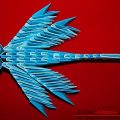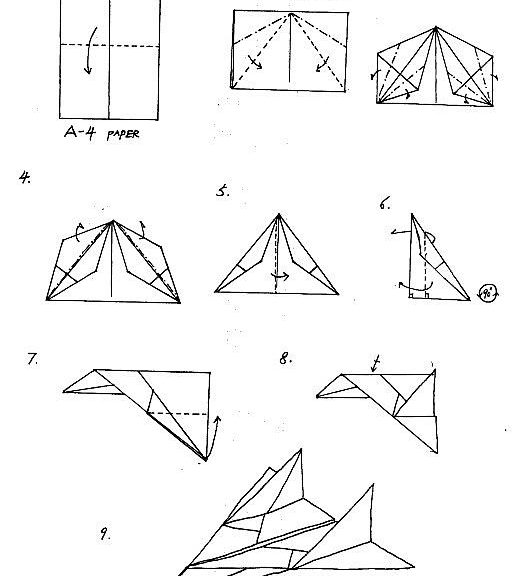
Methods of making paper airplanes in origami technique are available to everyone who wants
Methods of making paper airplanes inOrigami techniques are different. Almost any model of a flying device can be reproduced thanks to this wonderful technique of working with paper, which appeared many centuries ago in the eastern countries of the world. Drawing on schemes, each person, including a child, will be able to create a whole collection of wonderful crafts - airplanes made of paper of various models. Origami is an interesting kind of art that people like equally regardless of their age category and gender. Children are particularly interested in this type of activity. However, it is equally popular among girls and boys. Is that the manufacture of handicrafts is somewhat different. Girls like to make animals, birds, flowers and so on. Boys, as a rule, attract completely different games. Therefore, they tend to create architectural structures, military equipment (cars, ships, tanks, etc.) and much more. Along with the already listed variants of crafts, a special place is occupied by various aircrafts - simple and complex aircraft, mystical, models of past years and models of modern designs.  Manufacture of airplane paper is an occupationsimple and familiar to all of us since childhood. Of course, most of us have the easiest model left in memory, which can be done in a few minutes without any difficulty. But there are a lot of models and ways of making paper airplanes in origami technique. The work on one model will take three to five minutes, for other, more complex, paper aircraft will take significantly more time. But they are even able to force a child. Origami is not only an exciting activity, but also useful. It develops in the child attention, assiduity, motor skills. Airplanes are not just an interesting figure. They have the ability to fly, soar in the air. However, to such an aircraft flew, and even the duration of the flight was quite large, you need to make efforts. First, much depends on the model itself. Secondly, all the details of the product must be symmetrical, which requires special attention on the part of the creator. Third, for the beautiful floating in the air, the tail of the aircraft is of great importance. It is he who should pay maximum attention during the work.
Manufacture of airplane paper is an occupationsimple and familiar to all of us since childhood. Of course, most of us have the easiest model left in memory, which can be done in a few minutes without any difficulty. But there are a lot of models and ways of making paper airplanes in origami technique. The work on one model will take three to five minutes, for other, more complex, paper aircraft will take significantly more time. But they are even able to force a child. Origami is not only an exciting activity, but also useful. It develops in the child attention, assiduity, motor skills. Airplanes are not just an interesting figure. They have the ability to fly, soar in the air. However, to such an aircraft flew, and even the duration of the flight was quite large, you need to make efforts. First, much depends on the model itself. Secondly, all the details of the product must be symmetrical, which requires special attention on the part of the creator. Third, for the beautiful floating in the air, the tail of the aircraft is of great importance. It is he who should pay maximum attention during the work. 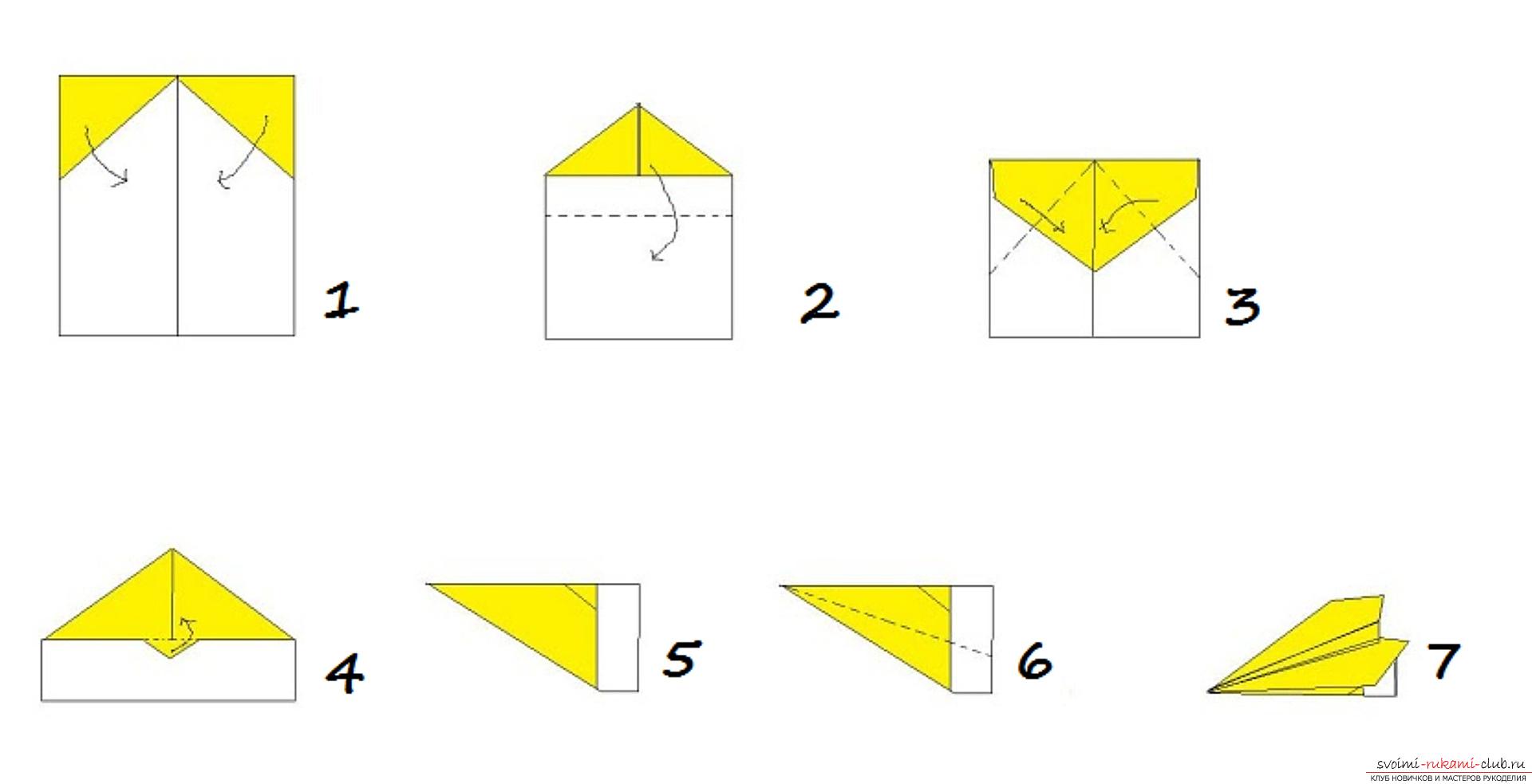
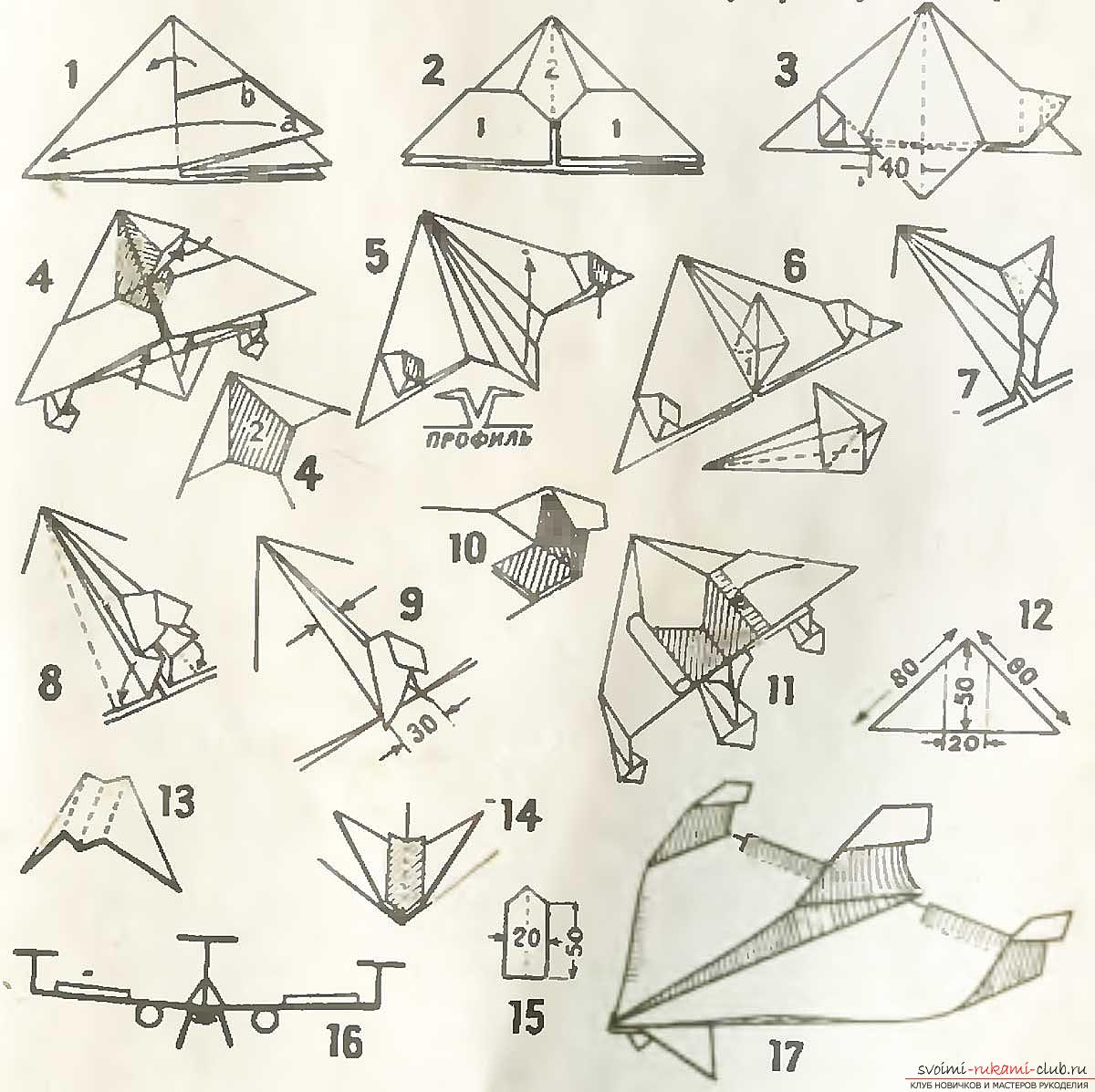
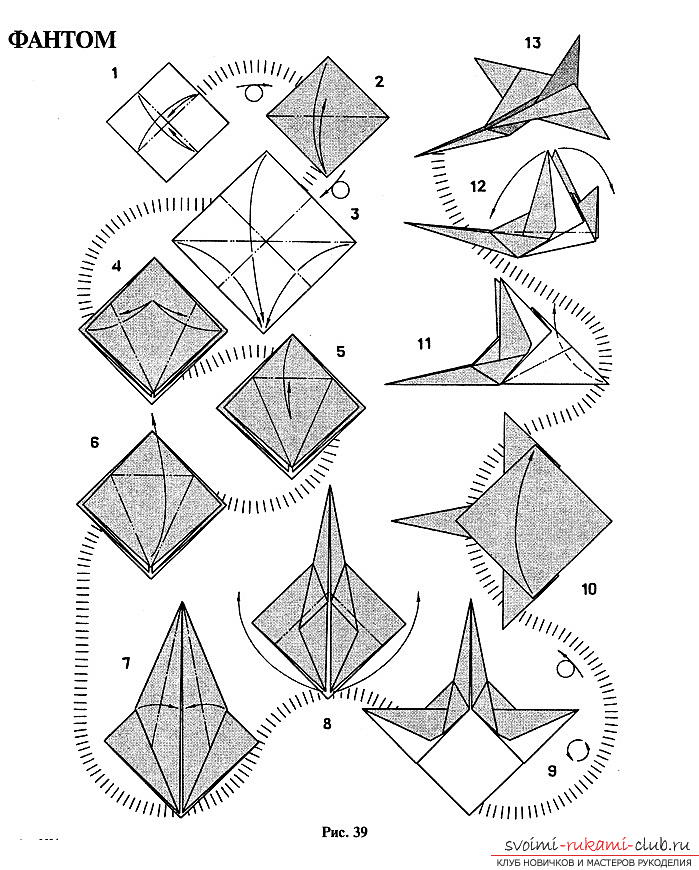
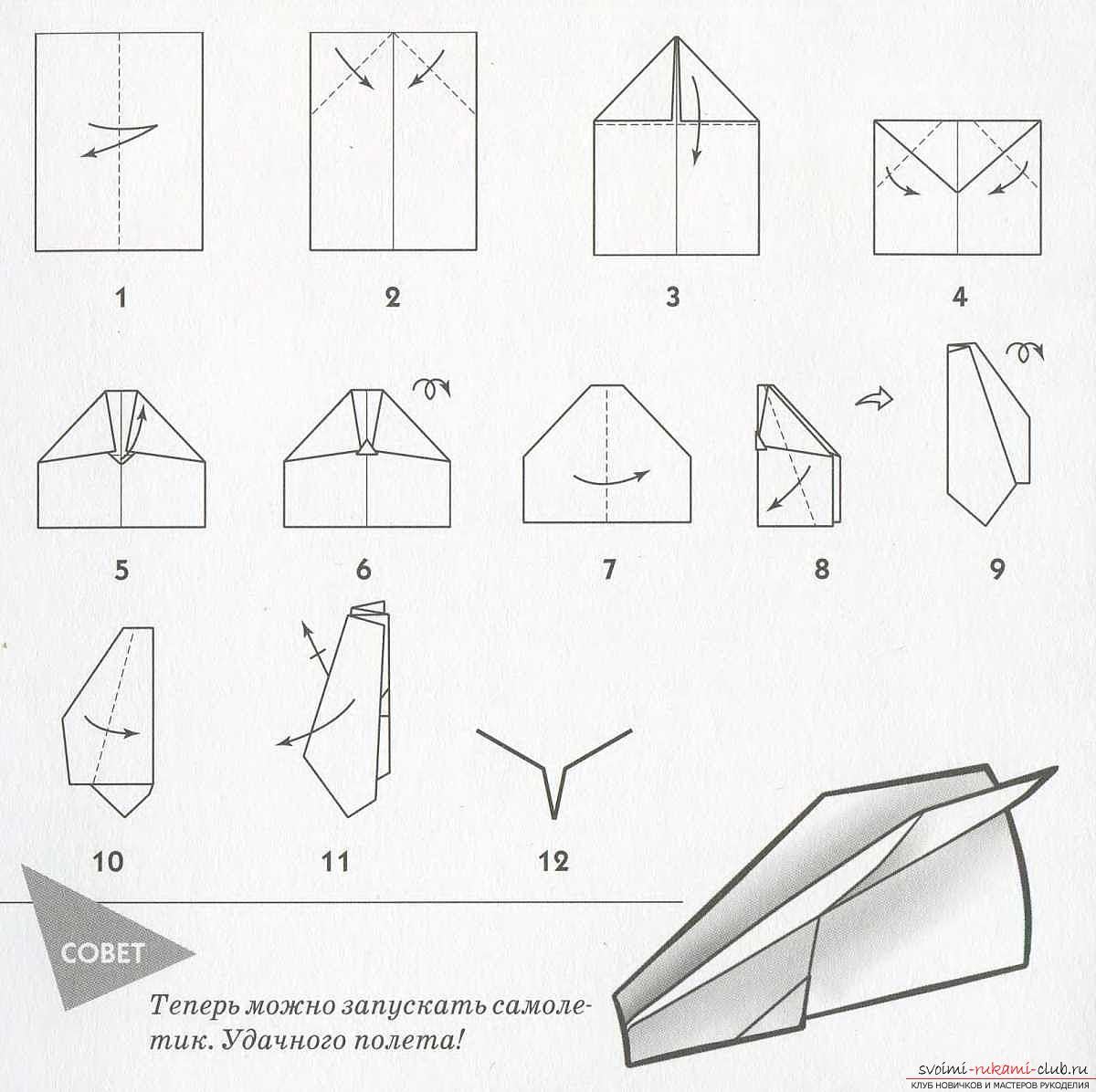

 Based on the above advice andschemes, you and your child will be able to make any model according to all the rules and according to all the requirements. When selecting materials, remember that it should be very easy. Therefore, choose the right paper. If you chose colored paper, the painted part should look inward, be on the work surface during manufacture. We offer several schemes for assembling paper airplanes in the origami technique. Each of the models has its own characteristics, but after all, the harder the work, the sweeter the result, as, indeed, in any work. Of particular note, of course, deserve such models of aircraft from paper, as ground-attack aircraft and fighters. They not only have the ability to fly well, but also in form and appearance resemble real modern military equipment. Such airplanes will become a pride, a highlight of the collection, if you or your child want to create this.
Based on the above advice andschemes, you and your child will be able to make any model according to all the rules and according to all the requirements. When selecting materials, remember that it should be very easy. Therefore, choose the right paper. If you chose colored paper, the painted part should look inward, be on the work surface during manufacture. We offer several schemes for assembling paper airplanes in the origami technique. Each of the models has its own characteristics, but after all, the harder the work, the sweeter the result, as, indeed, in any work. Of particular note, of course, deserve such models of aircraft from paper, as ground-attack aircraft and fighters. They not only have the ability to fly well, but also in form and appearance resemble real modern military equipment. Such airplanes will become a pride, a highlight of the collection, if you or your child want to create this.  According to the following scheme, it is not difficult to manufacture a fighter.
According to the following scheme, it is not difficult to manufacture a fighter.  This model is very similar to the modernmilitary air equipment, and, more specifically, the design of the Russian Su-27 fighter. If you did everything correctly, then such an airplane will indeed look organically during the flight, and the duration of the soaring in the air will amount to a considerable amount of time. As always, I want to try the finished model - to send it to flight. This can be done in the room (a large room, the entrance of the house and so on). The plane will fly, but you will not see the desired effect. Therefore, it is best to send your fighter into a flight in the open air, on the street, in the park, in the courtyard. We hope that the material of this article and the simple schemes for creating planes in origami technique will help you in your work.
This model is very similar to the modernmilitary air equipment, and, more specifically, the design of the Russian Su-27 fighter. If you did everything correctly, then such an airplane will indeed look organically during the flight, and the duration of the soaring in the air will amount to a considerable amount of time. As always, I want to try the finished model - to send it to flight. This can be done in the room (a large room, the entrance of the house and so on). The plane will fly, but you will not see the desired effect. Therefore, it is best to send your fighter into a flight in the open air, on the street, in the park, in the courtyard. We hope that the material of this article and the simple schemes for creating planes in origami technique will help you in your work.




